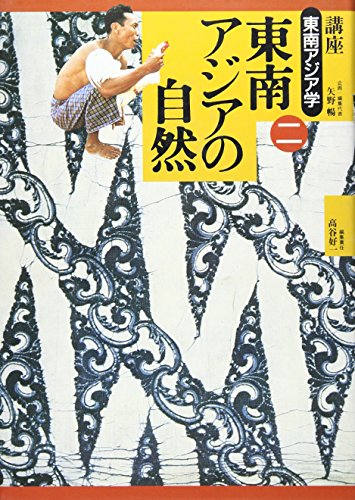- 著者
- 高谷 好一
- 出版者
- 京都大学東南アジア研究センター
- 雑誌
- 東南アジア研究 (ISSN:05638682)
- 巻号頁・発行日
- vol.17, no.4, pp.633-657, 1980-03
この論文は国立情報学研究所の学術雑誌公開支援事業により電子化されました。
1 0 0 0 IR 〈想像の共同体〉論批判:── 〈世界単位〉の立場から──
- 著者
- 高谷 好一
- 出版者
- 京都大学東南アジア研究センター
- 雑誌
- 東南アジア研究 (ISSN:05638682)
- 巻号頁・発行日
- vol.34, no.1, pp.307-326, 1996
この論文は国立情報学研究所の学術雑誌公開支援事業により電子化されました。
1 0 0 0 IR <資料・研究ノート>南スラウェシのサゴ生産
- 著者
- 高谷 好一
- 出版者
- 京都大学
- 雑誌
- 東南アジア研究 (ISSN:05638682)
- 巻号頁・発行日
- vol.21, no.2, pp.235-260, 1983-09
- 被引用文献数
- 1
この論文は国立情報学研究所の学術雑誌公開支援事業により電子化されました。This is a research report of two sago-villages in Kabupaten Luwu, South Sulawesi. Desa Takkalala, a community which formerly produced sago for subsistence, has been undergoing a drastic change in the last 10 to 15 years due to the improvement of the highway system and the consequent inflow of a large number of Bugis migrants, who are industrious planters of cloves and other cash crops. The market price of sago has risen recently, because the newcomers welcomed this crop as a cheap substitute for rice. But some villagers had already converted their sago forest into banana and cocoa gardens. They are hoping to transform the village into a sort of truck-farming village where they can grow more valuable crops than sago. In contrast to Desa Takkalala, Desa Pengkajoang remains a genuine sago-village, where sago is the mainstay of life. Besides sago production, villagers rely heavily on raising buffalo and fish. They believe that this is the best combination for tropical lowland, and argue that sago cultivation can be a commercially sound business if a market is secured.
1 0 0 0 環インド洋農耕文化圏の系譜
本研究計画は、これまで実施した科学研究費による海外学術調査、「熱帯島嶼域における人の移動に関わる環境形成過程の研究」(昭和55ー59年度)および「マレ-型農耕文化の系譜ー内発的展開と外文明からの変容」(昭和61ー63年度)、の研究成果を統合・総括するために計画されたものである。上記の調査によって、東南アジア島嶼部、スリランカ、南インド、マダガスカルなどのインド洋をとりまく諸地域が古くからの東西交流・民族移動によって共通の農耕文化要素をもつことが明らかになってきた。本計画は、上記二つの調査をとりまとめ、東南アジア、インド、マダガスカルにわたる、いわば「環インド洋農耕文化」ともよべる、この地域に共通の農耕文化の性格を明らかにし、海域世界の人の移動と農耕文化展開との関係を総合的に解明しようとして計画された。研究計画は、若干の補足調査を必要とするスリランカ、南インドへの分担者1名の派遣と、これまでの国外の共同研究者を招へいしての研究集会の開催、および調査成果の刊行の準備作業からなる。まず、補足調査については、分担者田中が10月21日から11月12日の派遣期間のうち前半はスリランカ、後半は南インドに滞在して調査を行い、スリランカでは分担者のジャヤワルデナが調査に参加した。スリランカでは、南西部ウェットゾ-ンの水田稲作における水稲耕作法について精査し、とくにマレ-稲作と共通する水牛踏耕や湿田散播法の分布と作業の由来などについて聴取調査を行った。また、稲品種の類縁関係からマレ-稲作との関連をさぐるための資料として、在来稲の採集・収集を行った。南インドの調査は、タミ-ルナドゥ、ケララの2州を中心にスリランカと同様の調査を実施するとともに、インジ洋交易の中継点となったカリカット、ゴアなどの港市都市を観察した。国外の分担者マツラダおよびジャヤワルデナをそれぞれ約1週間招へいし、分担者との共同研究とりまとめの打ち合せを行うとともに、平成2年1月19日と20日の2日間にわたり研究集会を開催した。研究集会では、各分担者が以下の研究報告を行い、各報告の検討と共同研究成果のとりまとめについて協議された。高谷:環インド洋をめぐる自然環境と人の移動史前田:マダガスカルとマレ-の農耕儀礼古川:環インド洋におけるアフリカ農耕とマレ-農耕田中:環インド洋に共通する稲作技術とその分布深沢:マダガスカル、ツィミヘティ族の村落、農業と牧畜マツダラ:東南アジア島嶼部の漂海民バジョウとその生業ジャヤワルデナ:スリランカ・マレ-の移住、その歴史と現在調査成果の刊行については、上記の研究報告を各分担者の責任において関連の学術雑誌に報告することが研究集会で確認された。また、研究成果を単行本として出版することが計画され、その第一段階として分担者古川が東南アジア島嶼部の低湿地に関するモノグラフをとりまとめた。これは平成2年秋に出版の予定である。
